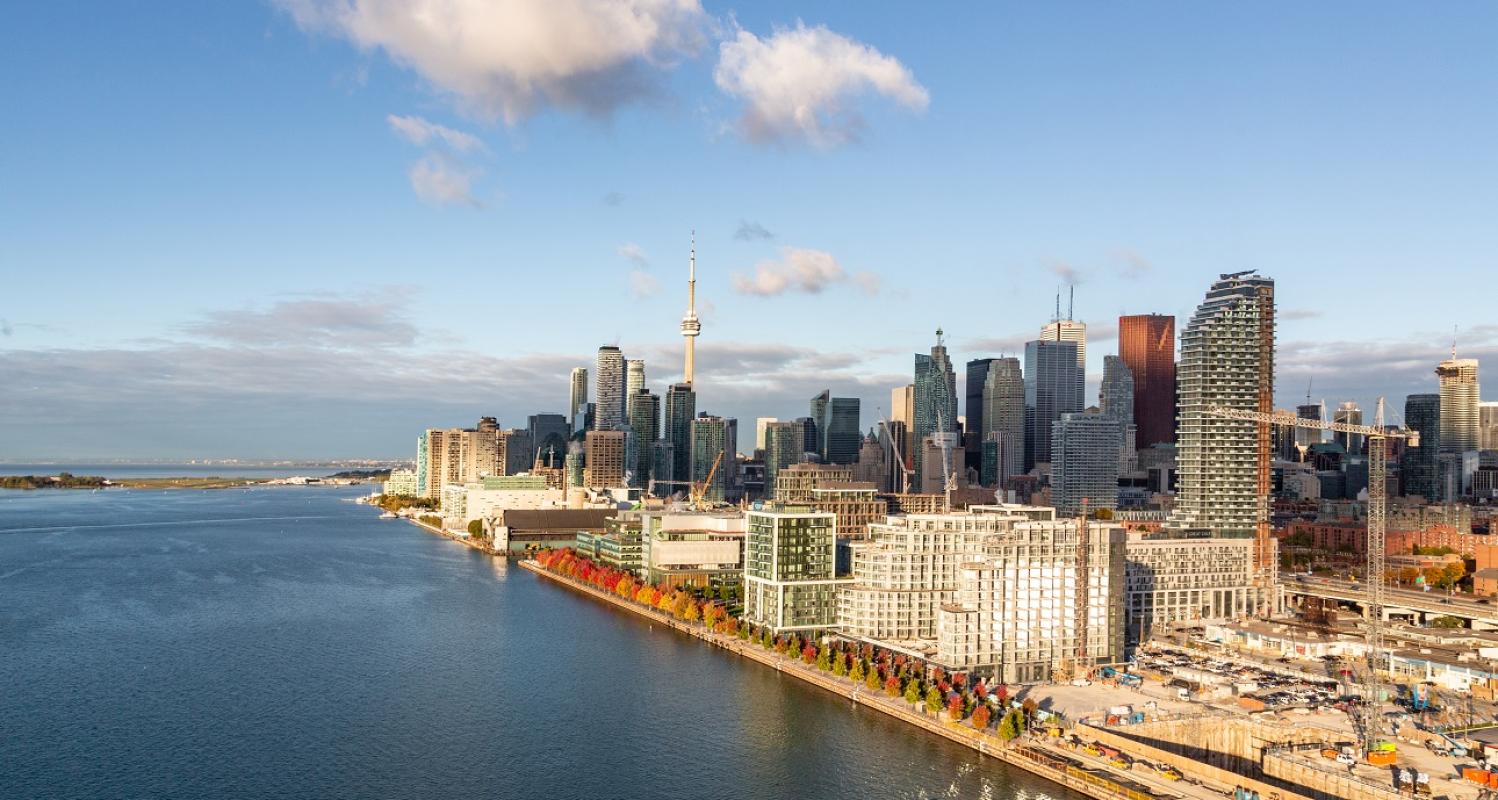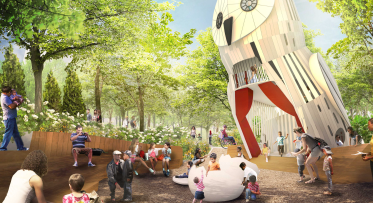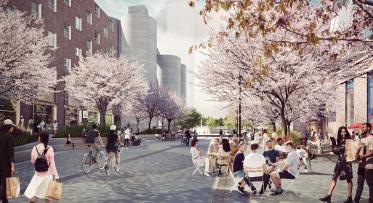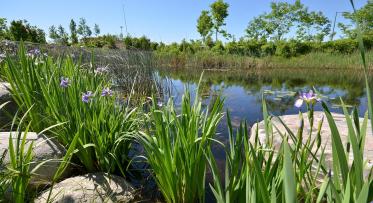Waterfront Toronto: a legacy of achievement, an exciting future
POSTED: APRIL 8, 2019 I ECONOMIC DEVELOPMENT, INFRASTRUCTURE, PARKS AND PUBLIC SPACES, TRANSPORTATION, DESIGN
By: Meghan Hogan
This summer, the City of Toronto and its waterfront will celebrate two important milestones. This June will mark the 30th anniversary of Toronto’s former mayor, David Crombie, delivering his Royal Commission Report on the future of the Toronto Waterfront. It’s also been 20 years since the federal, provincial and city governments formed the Task Force that recommended the creation of Waterfront Toronto. 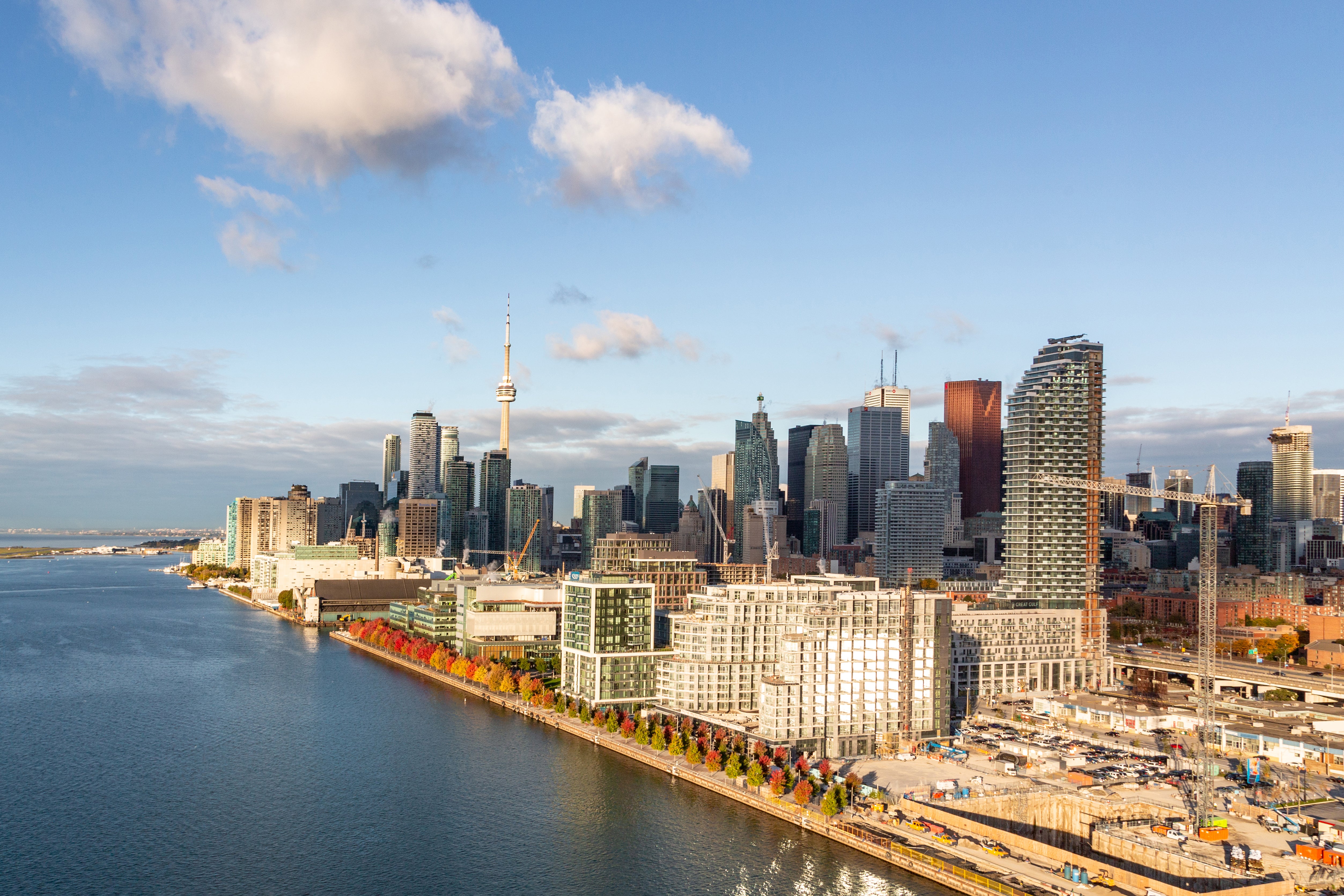
This west-looking aerial view of East Bayfront highlights how far our waterfront has evolved from its industrial past.
In order to understand the significance of these events, we need to journey back in time to when Toronto’s waterfront was synonymous with industry, isolation and inaccessibility. The parks and public spaces you’ve come to know and love like Canada’s Sugar Beach and Corktown Common were decades away and thriving new neighbourhoods like East Bayfront and the West Don Lands were merely a pipe dream.

Image of the Toronto waterfront when it was home to a thriving manufacturing industry. (Image from Toronto Archives)
Up until the early 2000’s, Toronto’s waterfront was largely derelict, underutilized, contaminated and lacking the critical infrastructure needed for its post-industrial future. During the 19th and early 20th century, Toronto was a small but growing city. The waterfront was its greatest asset since the bulk of Toronto’s of trade was by boat and manufacturing facilities were built along the water’s edge to allow for convenient shipping and transportation. At this time Toronto also embraced the Railway Era of the 1850’s, building dozens of tracks that flowed in and out of the City adjacent to the waterfront.
As we entered the latter half of the 20th century, the City moved away from it’s traditional manufacturing roots and the economy shifted towards finance, technology and creative services. As a result, industry slowly moved away from the waterfront and left large swaths of land underutilized and contaminated.
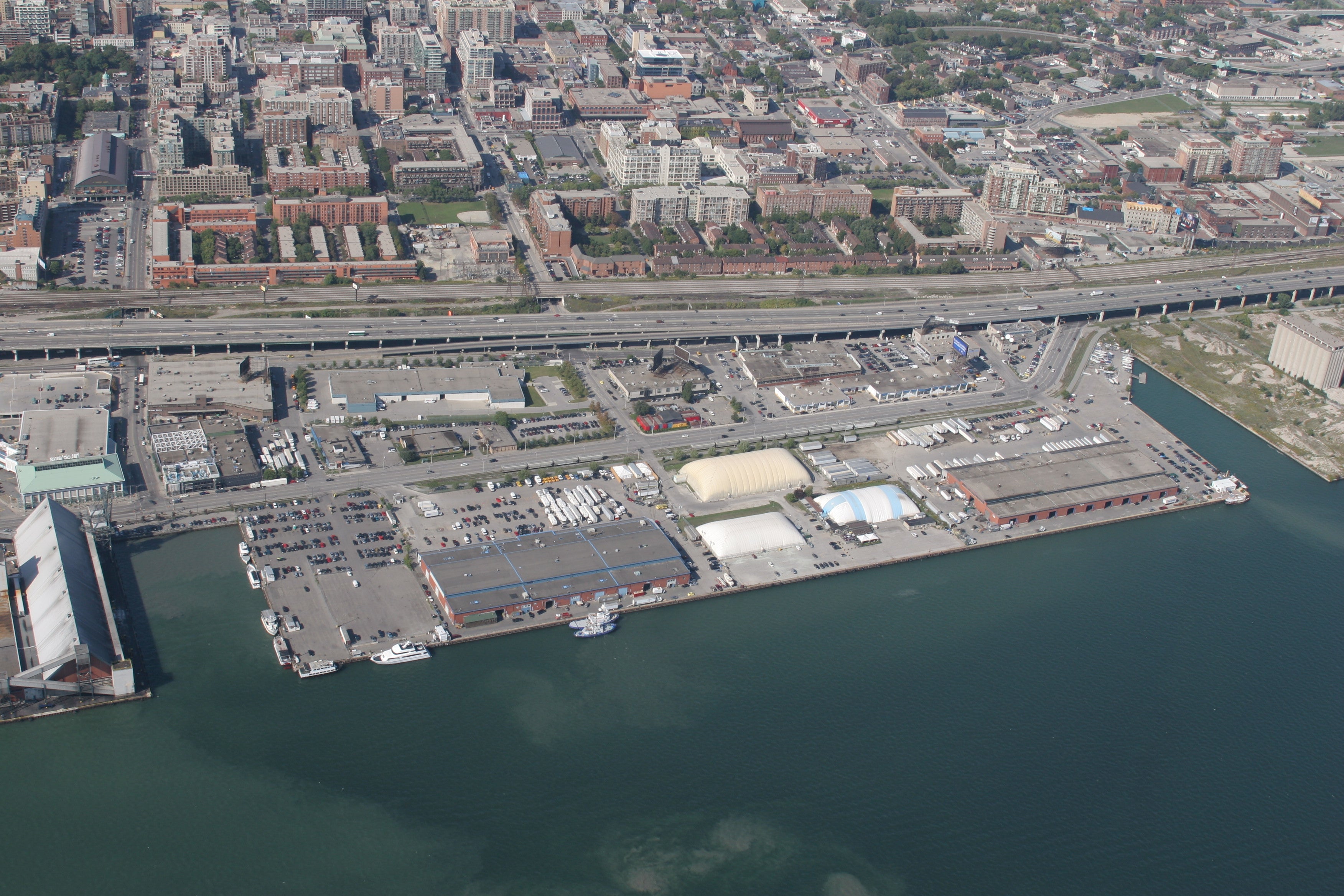 Aerial view of East Bayfront in 2005, prior to revitalization efforts.
Aerial view of East Bayfront in 2005, prior to revitalization efforts.
Around the same time there was a growing world-wide movement in urban waterfront revitalization. Major cities around the world like New York, Barcelona and London (just to name a few) not only redeveloped their waterfront, but also catapulted themselves onto the world stage attracting residents, businesses, tourists and prosperity.
Yet Toronto’s waterfront remained largely untouched in part because many different public departments, agencies, boards, and special purpose bodies that spanned across all levels of government owned parcels of waterfront land, in addition to numerous private land holdings. This restricted any cohesive waterfront vision from being realized and left revitalization efforts piecemeal and uninspiring.
Following public outcry in the late 1980s, the federal government took action by appointing the Honourable David Crombie to lead a Royal Commission to study the Toronto waterfront. The final report was published in 1989 and highlighted the challenges Toronto’s waterfront faced but was ultimately optimistic: “Toronto was born on the waterfront,” Crombie wrote, and “the people of Toronto … understand the unique historic opportunity that the waterfront gives this metropolitan city.” More importantly, it made recommendations on how we might overcome long-standing challenges and reinforced the enormous potential and value of the waterfront to the public and office-holders, laying the groundwork for future achievements.
Fast forward to 1999 – Prime Minister Jean Chrétien, Premier Mike Harris and Mayor Mel Lastman—who came to be known as the “Three Amigos”—came together to announce the formation of a task force that would make recommendations for developing the waterfront as part of Toronto’s bid to host the 2008 Summer Olympics.
 The three amigos gathered on the Toronto waterfront in 1999 for a historic announcement. (Image from Toronto Star)
The three amigos gathered on the Toronto waterfront in 1999 for a historic announcement. (Image from Toronto Star)
The task force determined that not only was waterfront revitalization necessary, but that it was an unprecedented opportunity that would have major, positive economic impacts on the City, the region and the country. It recognized that the revitalization of Toronto’s waterfront presented the single biggest opportunity for Toronto to meet the its challenges, foster economic growth and redefine how the city, province and country are perceived by the world.
Although Toronto lost the bid to host the 2008 Olympics, the governments of Canada, Ontario, and the Toronto pledged their support to the revitalization of Toronto’s lakefront. The Three Amigos pledged $1.5 billion in seed capital and consolidated development control over government-owned waterfront lands.
In 2001, Waterfront Toronto was officially created to oversee the planning and development of Toronto’s waterfront with a mandate to “enhance the economic, social and cultural value of waterfront lands, and to create an accessible and active waterfront for living, working and recreation".
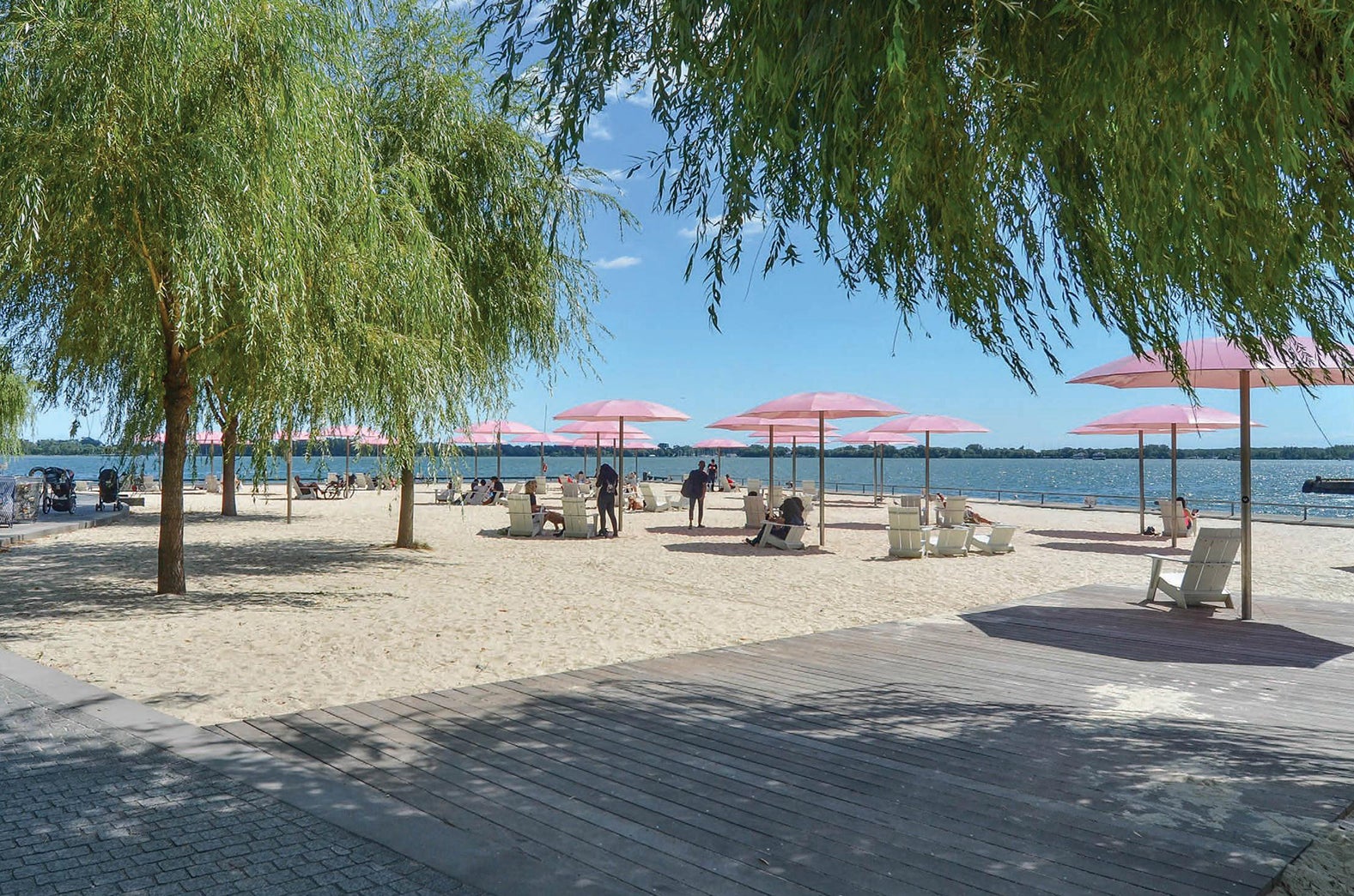
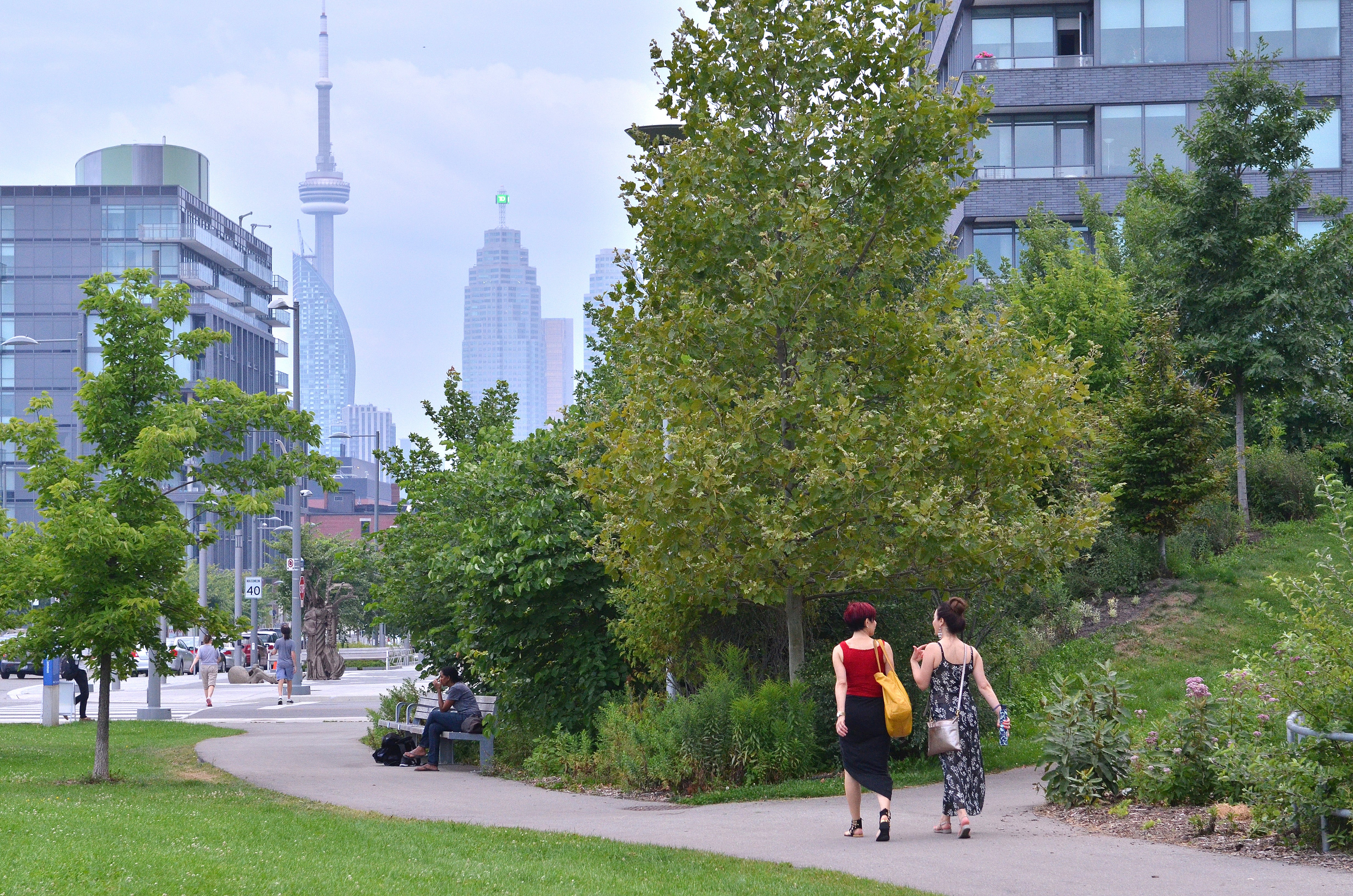
Top: Located on what was once a parking lot, Canada’s Sugar Beach is now a destination waterfront park. Above: Located in the once derelict West Don Lands, Corktown Common is a signature park at the centre of a thriving new neighbourhood. (Images by Nicola Betts)
Since then, we’ve achieved a great deal:
- Catalyzed the revitalization of nearly 100 hectares of land along the waterfront
- Created more than 34 hectares of parks and public spaces
- Created 13 kilometres of new water’s edge access
- Created 28 kilometres of critical infrastructure.
And the journey continues! We have grand plans for the next five years of waterfront revitalization. We recently released our 2019/20 – 2023/24 Five-Year Strategic Plan which outlines three main goals:
- Complete funded Priority Projects including Port Lands and 20+ others
- Imagine Canada's Next Generation Community
- Signature projects that will make Toronto one of the world’s great waterfront cities
We’re going to unpack these goals one-by-one in a series of upcoming blog posts. We hope that this look back on the milestone achievements that lead to Waterfront Toronto’s arrival was helpful in understanding the history and context of our waterfront. The next five years will be a defining time for Toronto and its waterfront, which could not have been achieved without the trailblazing actions of those who came before us.
READ OUR 2019/20 - 2023/24 FIVE-YEAR STRATEGIC PLAN

